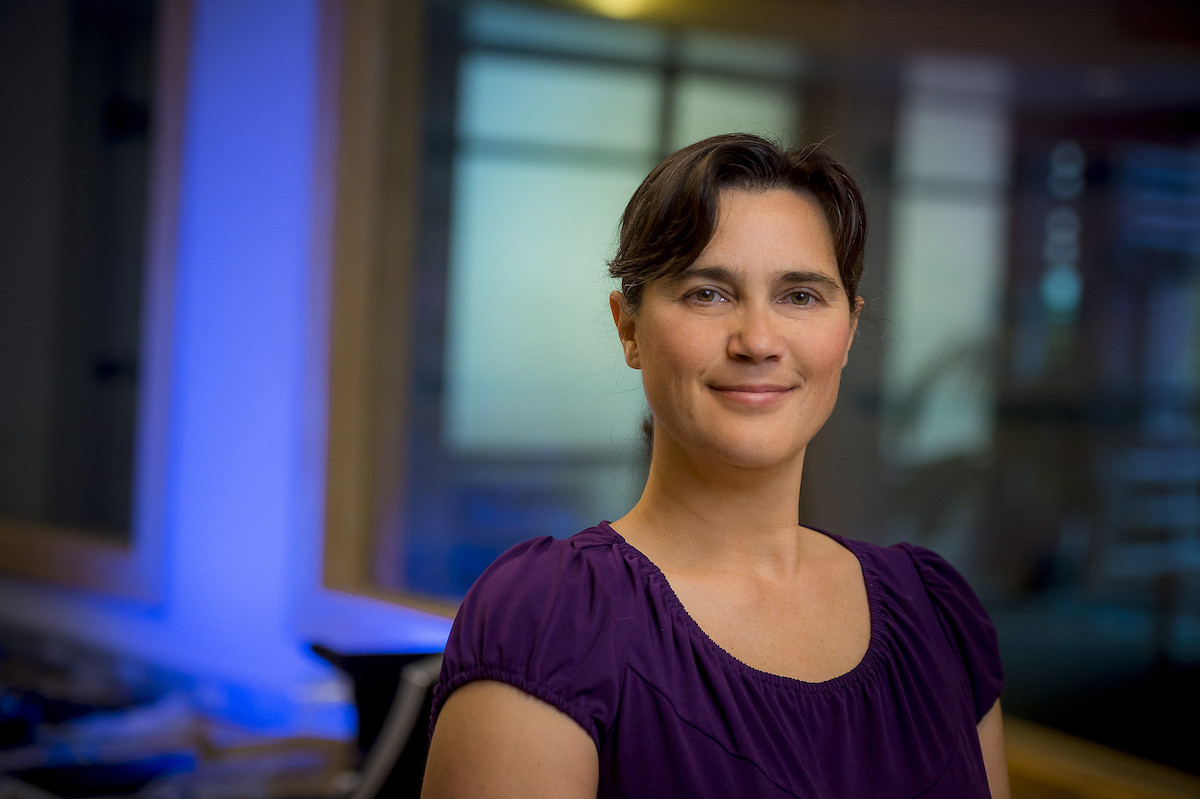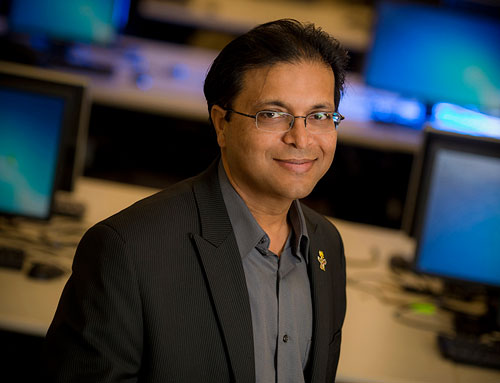UC San Diego Leads $50.5M Center for Computing
The center is partially funded by $35M contract from the Semiconductor Research Corporation; university researchers are also involved in two other centers
Story by:
Media contact:
Published Date
Story by:
Media contact:
Share This:
Article Content
Researchers led by Tajana Simunic-Rosing, a computer science professor at the University of California San Diego, received a $35 million contract from the Semiconductor Research Corporation to make computing orders of magnitude faster and more efficient. A group of 10 universities will band together and contribute additional funds to create the $50.5 million UC San Diego-led Processing with Intelligent Storage and Memory center, or PRISM.
PRISM will create new systems that ensure computation happens where the data is--in-memory and near-memory and storage--resulting in maximum performance and efficiency, but not requiring changes at the application level, Rosing said.

This will solve the key problem leading to low performance in today’s systems, which spend as much as 90% of the time moving data between memory and processors. To reach this goal, the team will have to both develop new software and new chip architectures. “We will build the hardware and software that will make sense of all the data that we generate today–quickly and accurately,” Rosing said.
The PRISM center will focus on four different themes: novel memory and storage devices and circuits; next generation architectures; systems and software; and grand challenge applications that will demonstrate the new capabilities. “Our center will revolutionize computing,” Rosing said. “We will develop new frameworks and systems that make it possible to run large-scale applications orders of magnitude more efficiently. What took many weeks and the power of multiple power plants will now take just minutes to hours and much less power.”
The award is part of the JUMP 2.0 program, which seeks to significantly improve performance, efficiency, and capabilities across a range of electronics systems. Novel materials, devices, architectures, algorithms, designs, integration techniques, and other innovations are at the heart of problem-solving for next-generation information and communications challenges. JUMP 2.0 brings together SRC, DARPA and industry and academic stakeholders.
What took many weeks and the power of multiple power plants will now take just minutes to hours and much less power.
“We are at an inflection point in the evolution of computing systems and technologies,” said Roman Caudillo, Intel-SRC assignee and JUMP 2.0 Director. “The JUMP 2.0 program will be a key component in identifying and forging the best path forward by driving public-private investment for disruptive innovation in microelectronics systems at scale.”
UC San Diego was chosen to lead the PRISM center because of its strong computer engineering program and cross-campus collaborations, including the Jacobs School of Engineering, Qualcomm Institute, School of Medicine, San Diego Supercomputer Center, the Halicioglu Data Science Institute, Rosing said. The campus proximity to semiconductor industry partners in San Diego and Southern California is another key to its success.
In addition to Rosing, UC San Diego computer science professors Jishen Zhao, and Yiying Zhang are co-principal investigators in PRISM. Rosing is also a co-principal investigator on a JUMP 2.0 center led by Georgia Tech that focuses on Cognitive computing. Two other UC San Diego computer science professors‒ Rajesh Gupta and Steve Swanson ‒are co-principal investigators on a JUMP 2.0 center led by the University of Illinois at Urbana Champaign, the ACE Center for Evolvable Computing.
“This award demonstrates UC San Diego’s strong leadership in optimizing computing performance and efficiency,” said Chancellor Pradeep K. Khosla. “With our internationally renowned expertise in computer science, multidisciplinary environment, close ties to the semiconductor industry, and successful collaborations with government agencies and other leading research institutions, this new center will enable our researchers to generate even more groundbreaking innovations with applications in military and commercial computing worldwide.”
JUMP 2.0 represents a significant investment in computing and semiconductor research at a time when Congress passed the CHIPS and Science Act, which aims to strengthen U.S. chip manufacturing, supply chains and national security. The legislation also includes investments in research and development, science and technology and workforce training in nanotechnology, clean energy, quantum computing and artificial intelligence. The CHIPS Act provides $52.7 billion for semiconductor research, development, manufacturing and workforce development in the United States.
Tackling grand challenges
The grand challenge applications of the PRISM center’s work in computing are twofold. One is personalized and secure drug development and discovery. The UC San Diego campus is particularly strong in this area, with deep expertise in bioinformatics, medicine, pharmacy, and bioengineering, Rosing said.

Right now, it takes an average of 6 ½ years and tremendous computing power to determine which pharmaceutical compounds should be tested in clinical trials–and more than 90 percent of the trials fail, Rosing said. Researchers believe they can shrink this timeline significantly by harnessing the benefits of large-scale systems developed by PRISM, so that drug discovery will take days rather than years, and results will be more accurate and more relevant.
The other application for PRISM research is ‘deep insights,’ whose goal it is to dramatically speed up the analysis of data from a variety of sources and to improve the accuracy of the results. For example, PRISM researchers plan to create systems that will be able to detect misinformation quickly and accurately. The same type of hardware and software could be used to produce answers for open-ended queries from humans that are more relevant and natural.
We are at an inflection point in the evolution of computing systems and technologies.
Partnering institutions in PRISM include Stanford University; Georgia Tech; University of California at Los Angeles, Berkeley and Irvine; University of Wisconsin Madison; Penn State University; University of Illinois Urbana-Champaign; University of Texas at Austin; and University of Virginia.
UC San Diego’s key role in two other JUMP 2.0 centers
As part of the Center for the Co-design of Cognitive Systems led by Georgia Tech, Rosing will also investigate ways to improve hyperdimensional computing, essentially a new way of doing machine learning that is orders of magnitude more efficient. This type of learning is much better at abstract reasoning, very light-weight in terms of computation and very resilient to noise. In traditional machine learning, a neural network is trained on thousands of images of a dog, for example, to be able to recognize that animal. With hyperdimensional computing, the network is able to recognize a dog based on just a few criteria, without the need for massive training data sets.

Gupta, who is also the director of the UC San Diego Halicioglu Data Science Institute is a co-principal investigator on the ACE Center for Evolvable Computing for Next Generation Distributed Computer Systems, led by the University of Illinois at Urbana Champaign. Gupta and computer science professor Swanson are experts in the field of memory management, architecture and application acceleration. Gupta will also serve as industry liaison for the center, where his role will be to find the right industry partners for the center ‘s researchers, expanding partnerships beyond industry sectors traditionally associated with semiconductors. He will also work to make sure that the center produces the workforce of tomorrow that industry needs.
“The center’s goal is not only to create specific technical advances in distributed systems but also to create a platform for the incorporation of new technological advances as component technologies evolve,” Gupta said.
Share This:
Stay in the Know
Keep up with all the latest from UC San Diego. Subscribe to the newsletter today.



